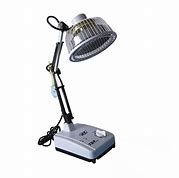https://www.youtube.com/watch?v=S5zmQCrcS80
Red and Infrared light therapy is a non-invasive medical treatment that uses specific wavelengths of light to penetrate the skin and promote healing and rejuvenation. This therapy has gained popularity in recent years due to its potential benefits for various health conditions, such as pain relief, skin aging, and wound healing. In this discussion, we will explore the principles, applications, and effectiveness of Red and Infrared light therapy.
Understanding the Basics of Light Therapy
Light therapy has become increasingly popular in recent years, and for a good reason. This non-invasive treatment uses specific wavelengths of light to improve mood, sleep, and skin health. Red and Infrared light therapy is a type of light therapy that uses red and near-infrared wavelengths to promote healing and reduce pain. The process works by penetrating the skin and tissues, stimulating the production of ATP, which is essential for cellular energy.
The Benefits of Red and Infrared Light Therapy
Red and Infrared light therapy offers many benefits, including pain relief, improved circulation, and reduced inflammation. It is also believed to help with skin health, including reducing wrinkles and acne. Additionally, it has been shown to promote wound healing and tissue repair, making it a valuable therapy for athletes and those recovering from injuries.
How to Use Red and Infrared Light Therapy
Red and Infrared light therapy can be administered in various ways, including through light-emitting diodes (LEDs), lasers, and lamps. These devices are typically applied directly to the skin, either through handheld devices or larger panels. The treatment typically lasts between 5 and 30 minutes, depending on the specific device and the area being treated.
The Difference Between Red and Infrared Light Therapy
Key takeaway: Red and Infrared light therapy uses specific wavelengths of light to improve mood, sleep, and skin health by stimulating the production of ATP and improving circulation. It can be administered in various ways, including handheld devices, light therapy panels, and infrared heating pads. Additionally, it offers benefits such as pain relief and reduced inflammation, making it a valuable therapy for athletes and those recovering from injuries.
Red Light Therapy
Red light therapy uses red wavelengths, typically between 630 and 660 nanometers. This type of therapy is believed to help with skin health, including reducing wrinkles and improving skin tone. It is also used to promote wound healing and tissue repair.
Infrared Light Therapy
Infrared light therapy uses near-infrared wavelengths, typically between 800 and 1000 nanometers. This type of therapy is believed to penetrate deeper into the skin and tissues, promoting deeper healing and pain relief. It is often used to treat musculoskeletal conditions, including joint pain and stiffness.
The Science Behind Red and Infrared Light Therapy
Key Takeaway: Red and Infrared light therapy is a non-invasive treatment that uses specific wavelengths of light to improve mood, sleep, and skin health. It can be administered through handheld devices, light therapy panels, or infrared heating pads and offers many benefits such as pain relief, improved circulation, reduced inflammation, and better skin health. However, it should not be used on pregnant women or those with certain medical conditions, and the recommended duration and dosage vary depending on the specific condition being treated.
Cellular Energy Production
Red and Infrared light therapy works by stimulating the production of ATP, which is essential for cellular energy. When the body is exposed to red and near-infrared wavelengths, it triggers a process called photobiomodulation, which increases the production of ATP in the mitochondria of our cells.
Improved Circulation
Red and Infrared light therapy also improves circulation, which can help reduce inflammation and promote healing. The light wavelengths are absorbed by the cells and tissues, which triggers a response that increases blood flow to the area. This increased circulation can also help deliver more oxygen and nutrients to the cells, promoting healing and reducing pain.
How to Use Red and Infrared Light Therapy at Home
Handheld Devices
Handheld devices are an easy and convenient way to administer Red and Infrared light therapy at home. These devices typically come in the form of a wand or a small panel and can be used to treat specific areas of the body. Simply hold the device directly against the skin and apply the light therapy for the recommended amount of time.
Light Therapy Panels
For more extensive treatments, light therapy panels can be used to treat larger areas of the body. These panels come in various sizes and can be used to treat the entire body or specific areas, such as the back or legs.
Infrared Heating Pads
Infrared heating pads are another way to administer Red and Infrared light therapy. These pads use infrared technology to deliver heat therapy to specific areas of the body, helping to soothe sore muscles and joints.
Pain Relief
One of the most significant benefits of Red and Infrared light therapy is pain relief. The therapy has been shown to help with conditions such as arthritis, fibromyalgia, and other chronic pain conditions. The light wavelengths penetrate the skin and tissues, promoting the production of ATP and reducing inflammation, which can help alleviate pain and promote healing.
Improved Circulation
Skin Health
Red and Infrared light therapy is also believed to have benefits for skin health. The therapy can help reduce wrinkles, improve skin tone, and reduce the appearance of acne. The light wavelengths promote the production of collagen, which can help improve the overall health and appearance of the skin.
Handheld Devices
Light Therapy Panels
For more extensive treatments, light therapy panels can be used to treat larger areas of the body. These panels come in various sizes and can be used to treat the entire body or specific areas, such as the back or legs. Light therapy panels typically emit both red and infrared wavelengths, making them a versatile tool for treating a wide range of conditions.
Infrared Heating Pads
Infrared heating pads are another way to administer Red and Infrared light therapy. These pads use infrared technology to deliver heat therapy to specific areas of the body, helping to soothe sore muscles and joints. Infrared heating pads typically emit both red and infrared wavelengths, making them a versatile tool for treating a wide range of conditions.
Reduced Inflammation
Red and Infrared light therapy has been shown to reduce inflammation, which can help alleviate pain and promote healing. The light wavelengths penetrate the skin and tissues, promoting the production of ATP and reducing the production of pro-inflammatory cytokines, which can cause inflammation.
Precautions
While Red and Infrared light therapy is generally safe, there are a few precautions to keep in mind. The therapy should not be used on pregnant women or individuals with certain medical conditions, such as epilepsy or thyroid conditions. Additionally, the therapy should not be used on areas of the body with active cancer or open wounds.
Dosage and Duration
The recommended dosage and duration of Red and Infrared light therapy vary depending on the specific condition being treated. It is essential to follow the manufacturer’s instructions or consult with a healthcare professional to determine the appropriate dosage and duration for your specific needs.
FAQs: What is Red and Infrared Light Therapy?
Red and Infrared light therapy is a form of treatment that involves the use of red and/or infrared light waves to penetrate the skin and stimulate cellular regeneration. The purpose of this therapy is to promote healing, reduce inflammation, and relieve pain.
How does Red and Infrared Light Therapy work?
Red and Infrared light therapy works by stimulating the mitochondria in our cells, which are responsible for producing energy. By stimulating this process, the therapy helps to regenerate damaged tissues, reduce inflammation, and stimulate the immune system. The therapy also improves blood circulation to the affected area, promoting the delivery of oxygen and nutrients.
What are the benefits of Red and Infrared Light Therapy?
Red and Infrared light therapy has been shown to have a range of benefits including reduced joint pain, reduced inflammation, and increased healing time. It can also improve circulation, reduce muscle spasms, improve skin tone and texture, and promote relaxation.
What conditions can be treated with Red and Infrared Light Therapy?
The therapy is used to treat a variety of conditions, including arthritis, joint pain, muscle pain, wound healing, skin conditions such as acne or psoriasis, and neuropathic pain. It is also used by athletes to speed up recovery after an injury or workout.
How long does a Red and Infrared Light Therapy session last?
The length of a treatment session will depend on the condition being treated and the severity of the symptoms. Generally, a session lasts between 10 and 20 minutes, and multiple sessions may be required for maximum benefit.
Is Red and Infrared Light Therapy safe?
Yes, Red and Infrared light therapy is generally considered safe. It is non-invasive and there are no known side effects. It is important to follow the instructions provided by your healthcare provider or the manufacturer of the device to ensure safe and effective treatment.








